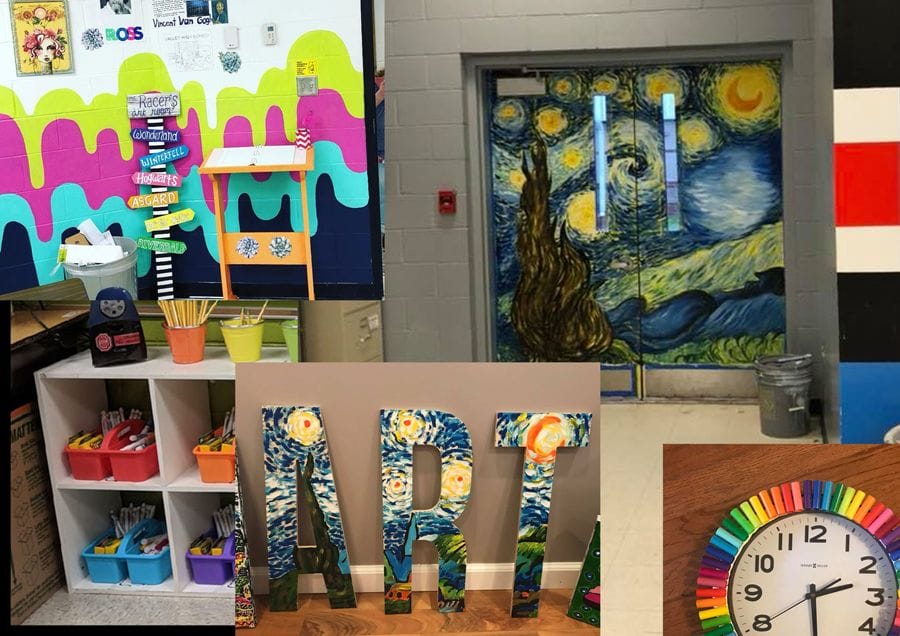Welcome to the world of art room decoration! As an artist and someone who understands the importance of a well-decorated and organized creative space, I’m excited to share my insights. A thoughtfully designed art room can be a source of inspiration, helping you unleash your creativity and enjoy your artistic process. This guide will delve into various elements you can incorporate into your art room decoration, ensuring that your creative space feels welcoming and functional.
Understanding the Importance of Art Room Decoration
Before we dive deep, let’s explore why decorating your art room is essential. A well-decorated art space can:
- Enhance Creativity: Aesthetic surroundings can boost your creative thinking.
- Provide Functionality: Well-organized spaces promote efficient workflows.
- Reflect Your Personality: Personal touches make the space uniquely yours.
Key Elements of Art Room Decoration

1. Color Schemes That Inspire
The color palette of your art room plays a significant role in setting the mood. Here are some ideas:

| Color | Psychological Effect | Best Uses |
|---|---|---|
| Blue | Calming and Focused | Painting, Drawing |
| Yellow | Cheerful and Energetic | Mixed Media, Collage |
| Green | Balance and Refreshing | Sculpture, Ceramics |
| Red | Passionate and Motivating | Abstract Art, Bold Projects |
Choose a color that resonates with you. For example, I painted my art room a serene shade of green, which helps me maintain focus while working on my watercolor paintings.

2. Furniture and Organization
Choosing the Right Furniture

Your workspace should be comfortable. Here’s a list of essential furniture you might consider:
- Adjustable Easel
- Comfortable Chair
- Storage Units (Shelves, Drawers)
- Table for Mixed Media

When I renovated my art room, I opted for a sturdy, adjustable easel that allows me to work on different sizes of canvases easily.
Smart Organization Techniques

Keeping your art supplies organized is vital. Here are some clever organization hacks:
- Use Clear Containers: Easy visibility of supplies.
- Label Everything: Saves time finding materials.
- Vertical Storage: Utilize wall space for tools and canvases.
Personalizing Your Art Room
Incorporating Personal Touches
Your art room should reflect who you are as an artist. Here are ways to add personal touches:
- Art Displays: Showcase your favorite pieces.
- Inspiration Boards: Pin images, quotes, and sketches that inspire you.
- Personal Mementos: Include items that hold sentimental value.
Creating an Inspiring Atmosphere
Light plays a crucial role in any creative space. Here are some tips:
- Natural Light: Position your desk near windows where possible.
- Task Lighting: Invest in good desk lamps for detailed work.
- Seasonal Decor: Change decorations according to seasons to keep things fresh.
Pros and Cons of Different Decoration Styles
1. Modern Minimalist
The modern minimalist style focuses on simplicity and functionality.
- Pros: Less clutter and distractions, promotes a clear mind.
- Cons: May feel cold or uninviting to some.
2. Bohemian Vibe
This style is vibrant and often eclectic, reflecting various cultures.
- Pros: Highly personalized, full of creativity.
- Cons: Can become cluttered if not managed well.
3. Industrial Style
Characterized by raw materials, this style gives an urban feel.
- Pros: Unique and trendy; can be cost-effective when using reclaimed materials.
- Cons: May feel too harsh or unwelcoming for a creative space.
Art Room Decor Ideas Based on Size
Small Art Room Solutions
Small spaces can be just as inspiring! Here are some tips:
- Foldable Furniture: Use drop-leaf tables or collapsible easels.
- Use Vertical Space: Shelves or pegboards can hold materials up high.
- Light Colors: Opt for light colors to make the space feel larger.
Large Art Room Inspirations
If you’re lucky enough to have a large space, consider:
- Dedicated Zones: Create areas for different types of work (e.g., painting, drawing, craft).
- Showcase Art: Use wall space for large art pieces or installations.
- Comfortable Seating: Include a cozy area to relax and reflect.
Maintaining Your Art Room
Once your art room is decorated, maintaining it is crucial for continued inspiration. Here are a few tips:
- Regularly Declutter: Take time each month to organize and toss what you don’t need.
- Deep Clean: Schedule deep cleaning sessions to keep your space fresh.
- Routine Upgrades: Refresh your decor occasionally to keep things exciting.
FAQs About Art Room Decoration
1. What are the best colors for an art room?
Colors like blue (calming), yellow (energetic), and green (refreshing) are excellent choices. Choose colors that resonate with your creative process.
2. How can I maximize storage in a small art room?
Utilize vertical space with shelves and pegboards. Clear containers and labels can also help keep supplies organized.
3. What should I consider when choosing furniture for my art room?
Look for comfort, functionality, and the ability to adapt to different tasks. An adjustable easel and a comfortable chair are must-haves.
4. How can I personalize my art room?
Add personal touches like showcasing your artwork, inspiration boards, and incorporating mementos that inspire you.
Conclusion: Crafting Your Artistic Space
Art room decoration is more than just aesthetics; it’s about creating a space that fuels your creativity and reflects your identity as an artist. Remember, the best art room is one that makes you feel comfortable and inspired. Let the decoration process become part of your artistic journey, and soon enough, your art room will be your favorite corner of the world.